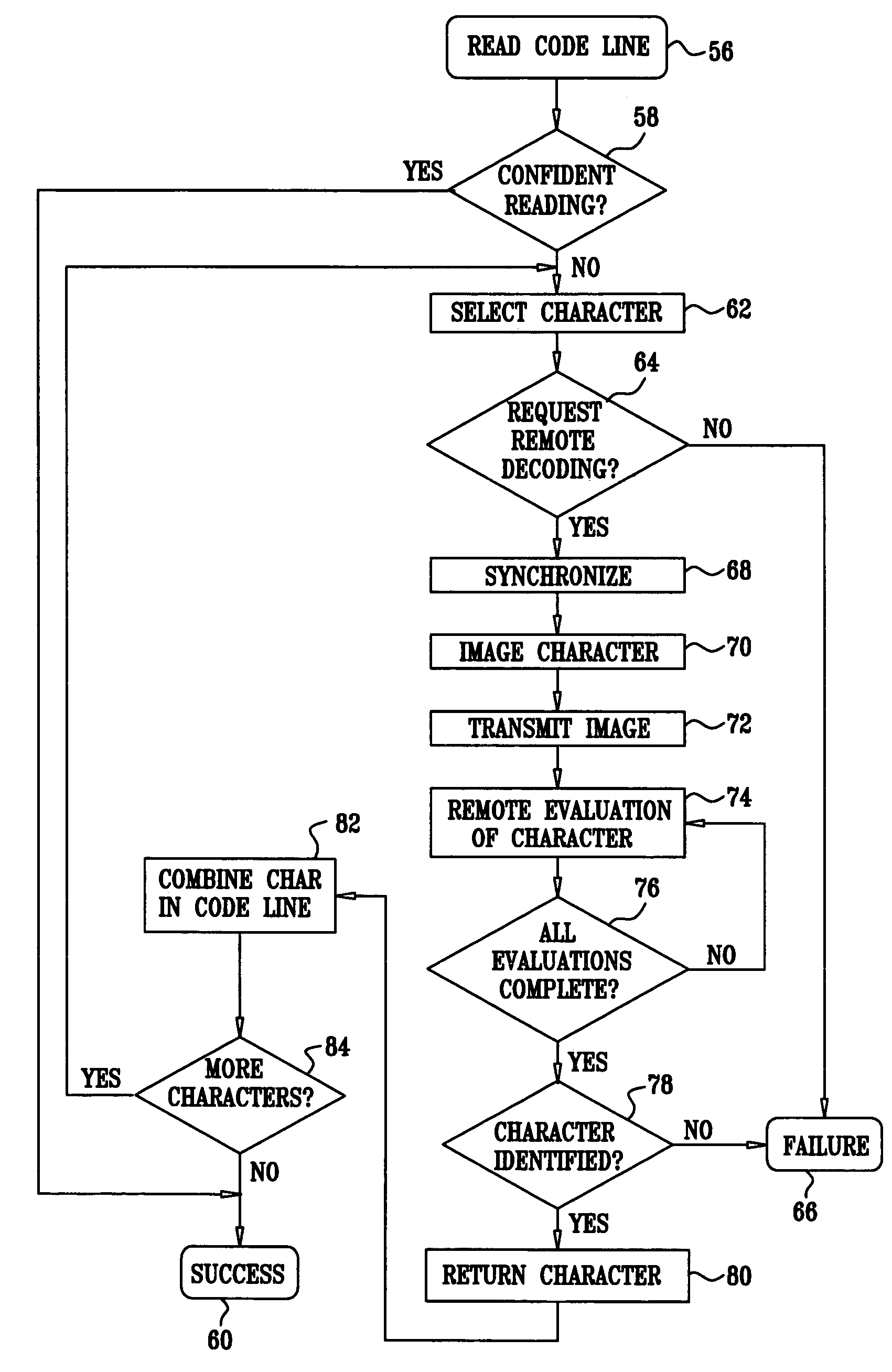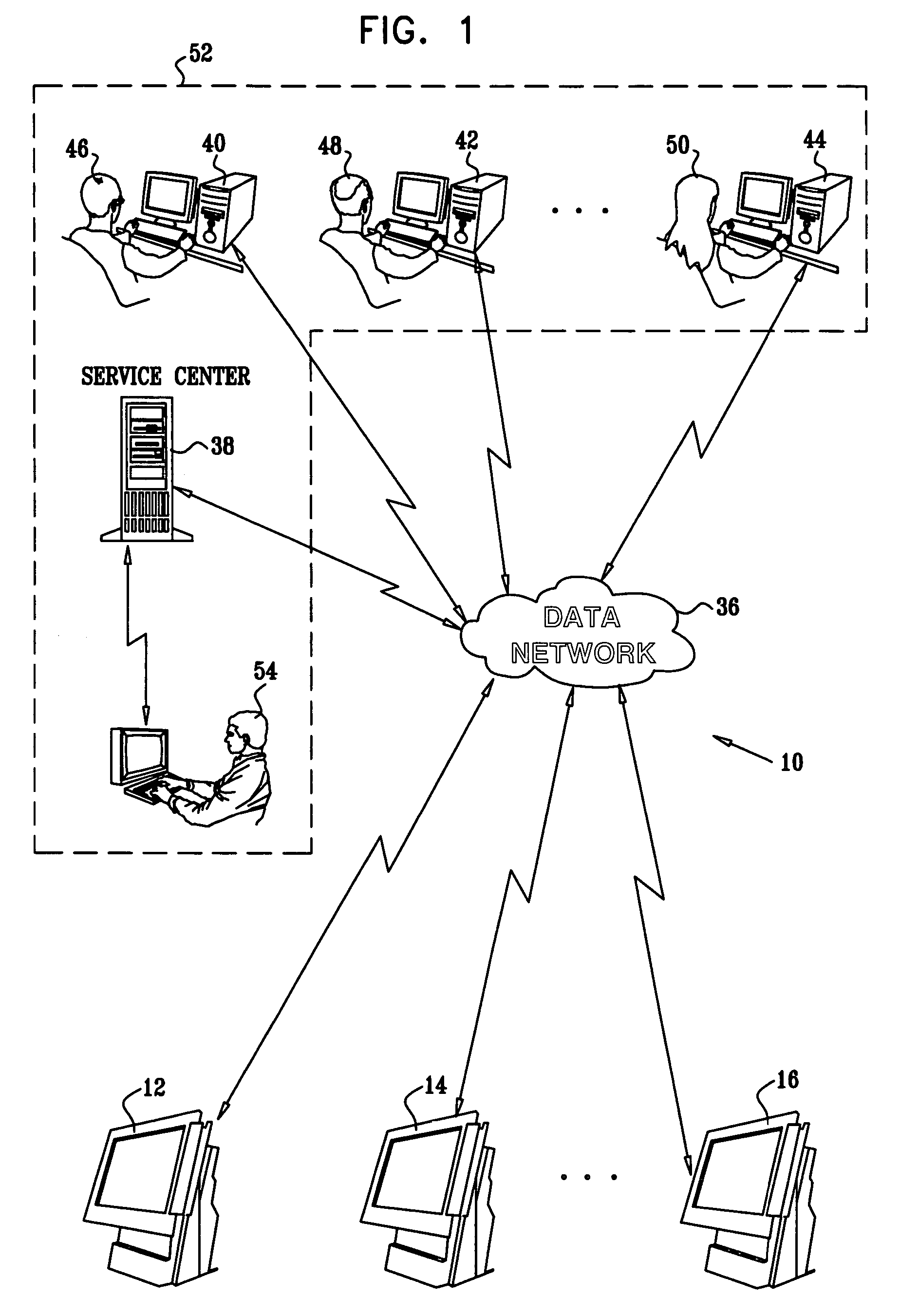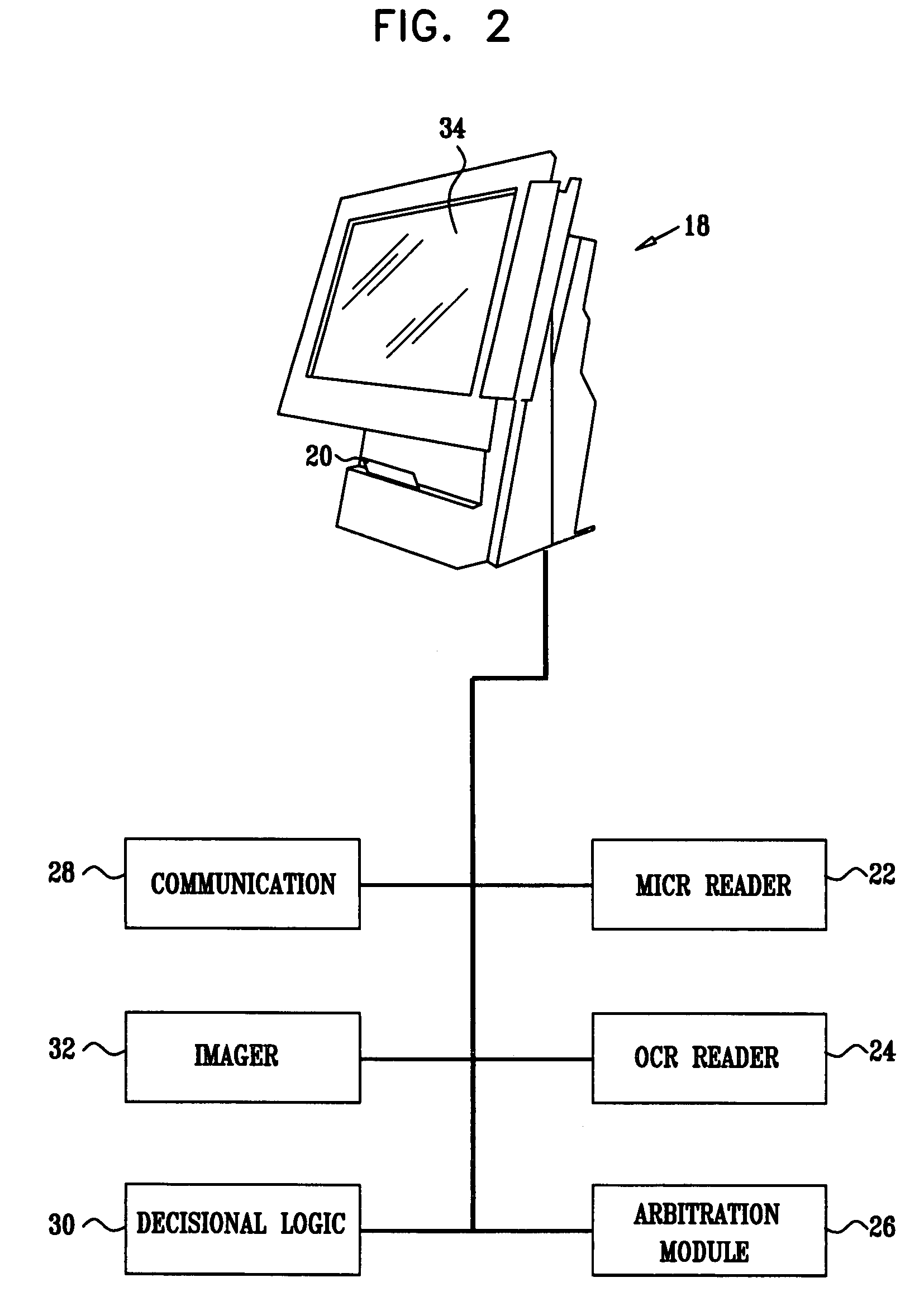On-line correction of check code line recognition in point-of-sale stations
a check code and point-of-sale station technology, applied in the field of document recognition, can solve the problems of manual data entry tedious and error-prone, state-of-the-art magnetic reader significant number of misreads, and avoid annoying delays for shoppers, and achieve high-quality character recognition. , the effect of rapid and reliable check code line recognition
- Summary
- Abstract
- Description
- Claims
- Application Information
AI Technical Summary
Benefits of technology
Problems solved by technology
Method used
Image
Examples
example
[0051]The economic benefit of the invention can be appreciated by a consideration of the following example. Assume that the service center 52 (FIG. 1) services a number of retail chains having an aggregate daily volume of 10 million checks. Furthermore, assume that 4% of the checks are rejected during a first reading attempt at the POS terminals, and 1% (100,000 checks) remain unread after two or more attempts. If all the rejected checks were entered into the system manually, with an estimated average processing time of two minutes (120 seconds) per check, the time required for entry would be:
10,000,000*0.01*120=12,000,000 seconds per day.
[0052]A dedicated operator of a POS terminal provides, at most, 8 hours (or 28,800 seconds) / shift of work. Thus, the above the check processing time translates into full time equivalents (FTE) as follows.
PUM
 Login to View More
Login to View More Abstract
Description
Claims
Application Information
 Login to View More
Login to View More - R&D
- Intellectual Property
- Life Sciences
- Materials
- Tech Scout
- Unparalleled Data Quality
- Higher Quality Content
- 60% Fewer Hallucinations
Browse by: Latest US Patents, China's latest patents, Technical Efficacy Thesaurus, Application Domain, Technology Topic, Popular Technical Reports.
© 2025 PatSnap. All rights reserved.Legal|Privacy policy|Modern Slavery Act Transparency Statement|Sitemap|About US| Contact US: help@patsnap.com



